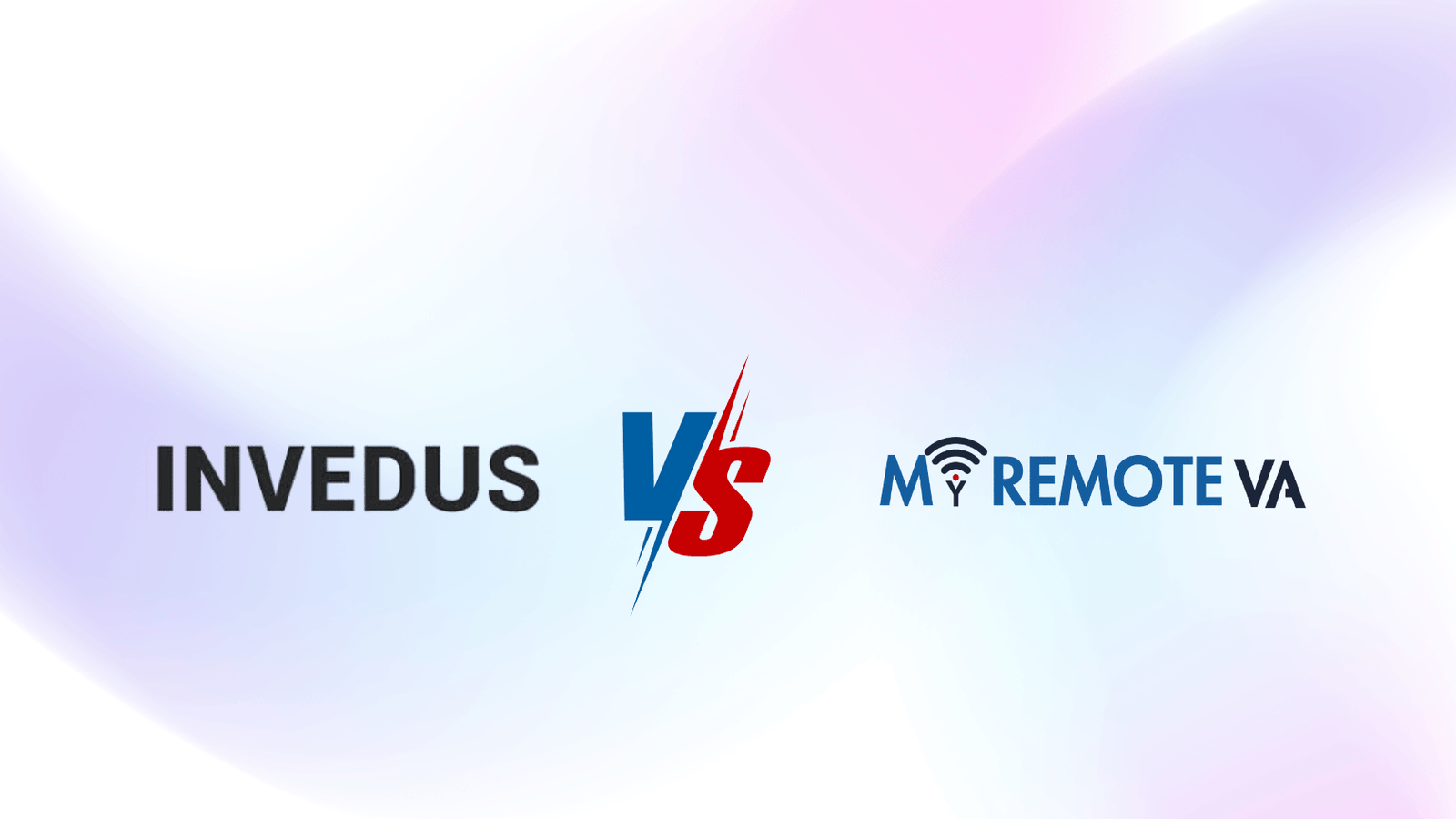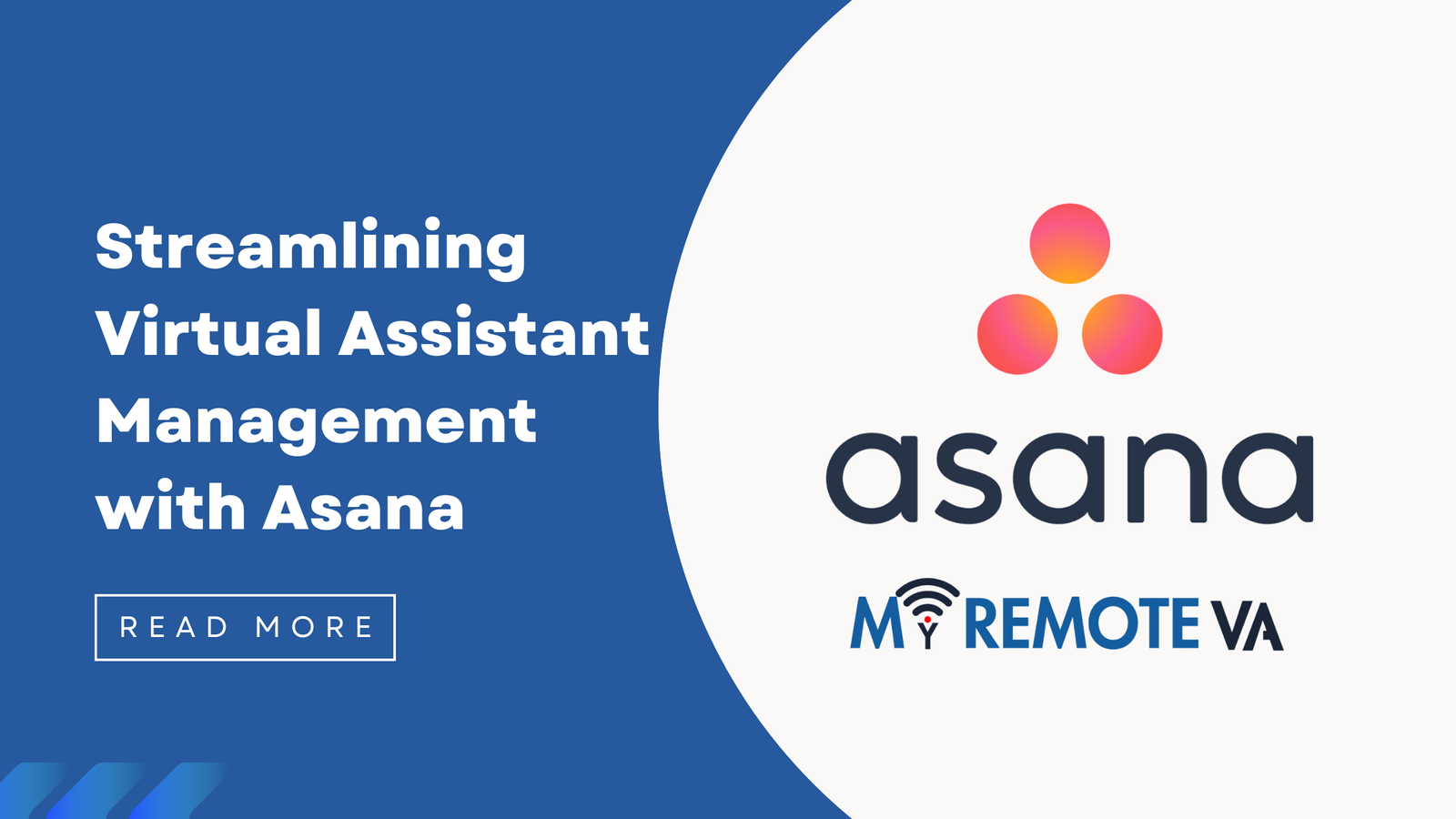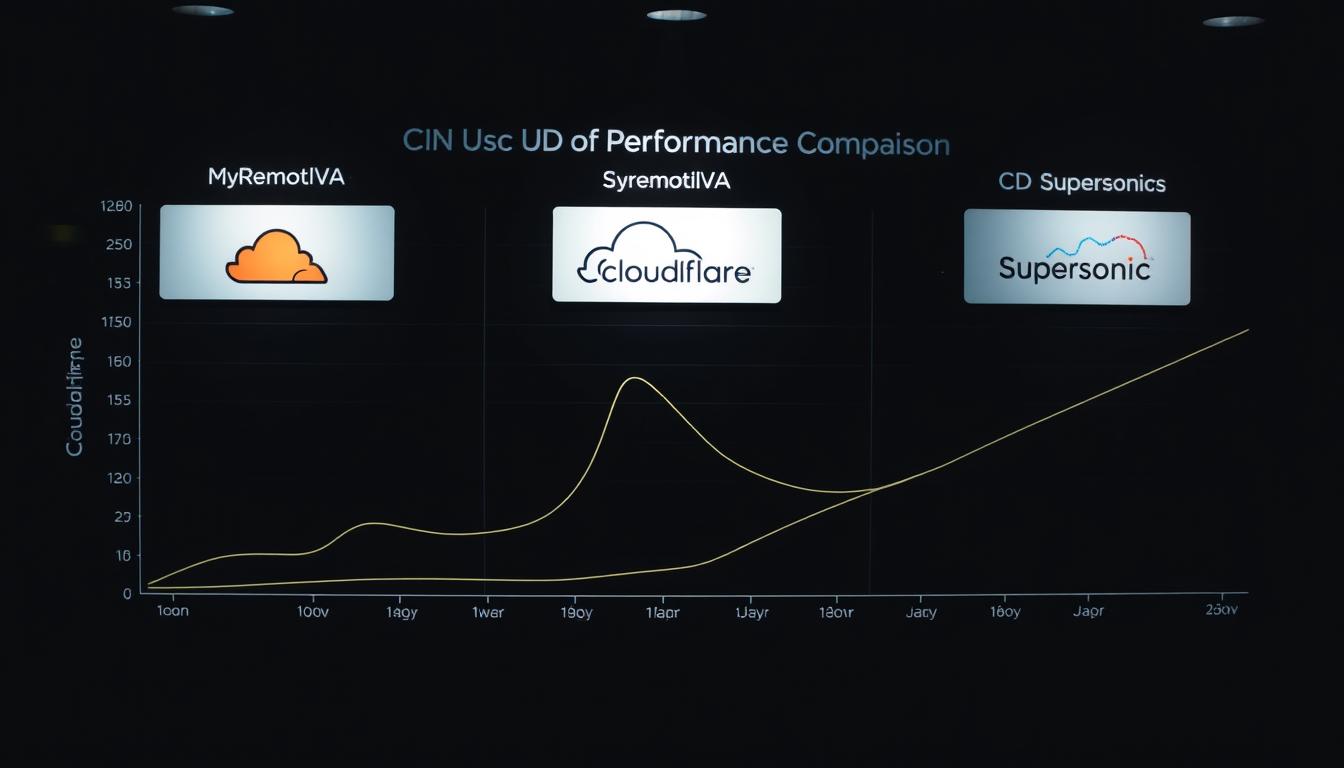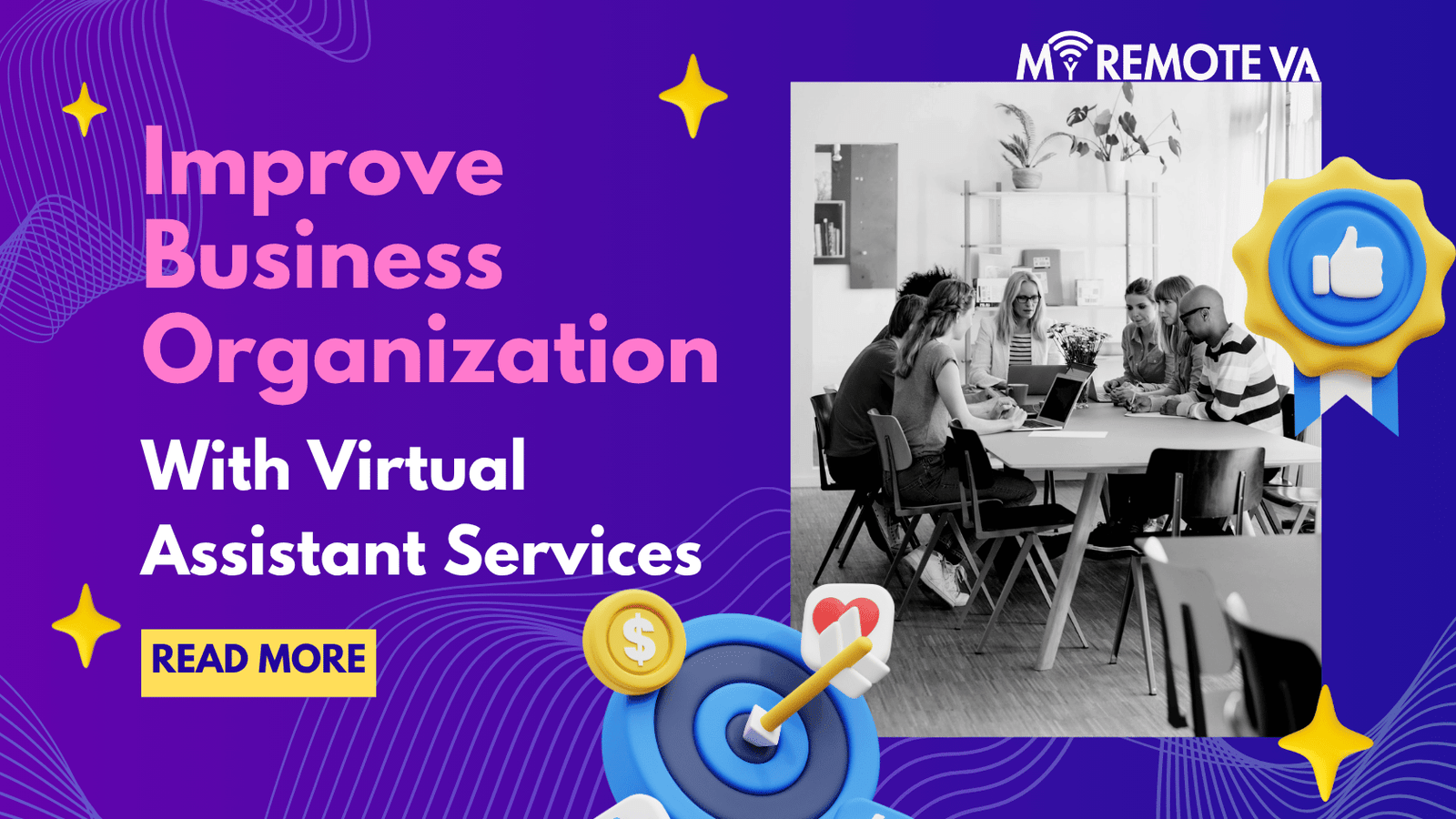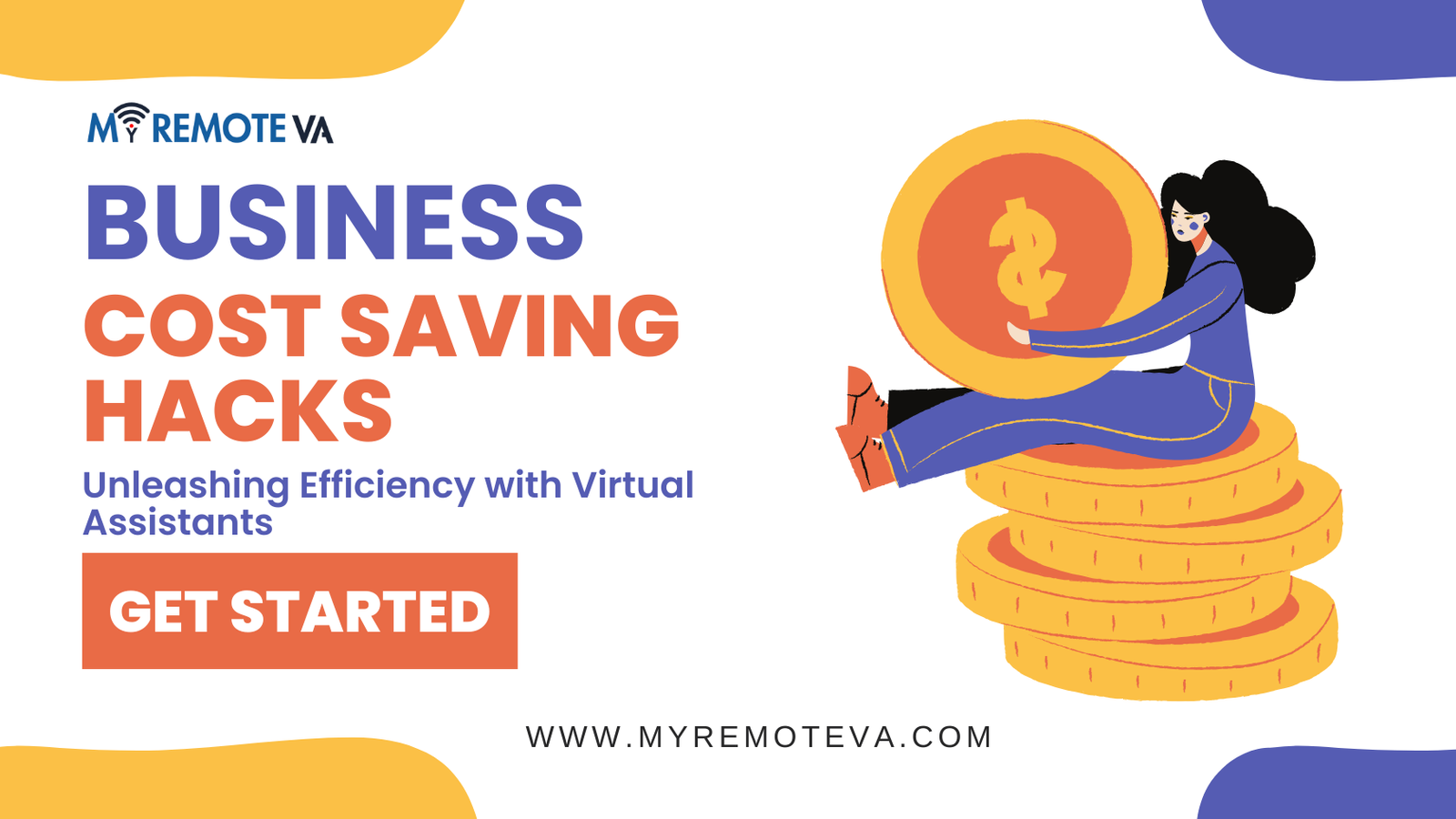Reduce Business Expenses with Virtual Assistant Services
In today’s competitive landscape, businesses are constantly seeking ways to optimize costs and improve efficiency. Virtual Assistant (VA) services offer a powerful solution to reduce business expenses while maintaining productivity and growth.
- Reduce Business Expenses with Virtual Assistant Services
- Introduction: The Cost-Effective Solution for Growth
- Understanding the Financial Benefits of Hiring a Virtual Assistant
- Areas Where Virtual Assistants Can Reduce Business Expenses
- Recent Market Signals in Key Regions: USA, UK, New Zealand, Singapore, Australia, UAE (Last Month)
- Calculating Your Potential Savings
- Choosing the Right Virtual Assistant Service to Reduce Business Expenses
- Implementing Virtual Assistant Services Effectively to Reduce Business Expenses
- Case Studies: Real-World Examples of Cost Reduction
- FAQ: Frequently Asked Questions About Reducing Business Expenses with Virtual Assistant Services
- What specific tasks can a virtual assistant handle to reduce my expenses?
- How Much Does It Typically Cost to Hire a Virtual Assistant Compared to a Full-Time Employee?
- Is it safe to outsource sensitive business information to a virtual assistant?
- How can I ensure effective communication and collaboration with a virtual assistant who is working remotely?
- Legal Considerations for Hiring Virtual Assistants Internationally
- How can I find a reliable and qualified virtual assistant to Reduce Business Expenses?
- Can a Virtual Assistant Help With International Business Expansion?
- What are the tax benefits of hiring a virtual assistant for my business?
- How do I Track the Performance and Productivity of a Virtual Assistant?
- What happens if I am not satisfied with the performance of a virtual assistant?
How Virtual Assistants Help Reduce Costs
By delegating tasks to a virtual assistant, you can significantly lower overhead costs associated with hiring full-time employees. These cost savings can include:
- Salary and Benefits: Avoid the expense of salaries, health insurance, retirement contributions, and other employee benefits.
- Office Space and Equipment: Eliminate the need for additional office space, equipment, and supplies.
- Training Costs: Reduce or eliminate training costs associated with onboarding new employees.
- Payroll Taxes: Avoid payroll taxes, worker’s compensation, and other employer-related taxes.
Data consistently shows that businesses leveraging virtual assistants experience a noticeable decrease in operational costs . Instead of fixed salaries, you pay for only the hours worked, making it a flexible and cost-effective solution.
Flexible Plans to Fit Your Needs
Whether you need assistance with administrative tasks, technical support, customer service, marketing, or creative projects, there’s a virtual assistant solution to fit your budget. Many VA providers offer a range of flexible plans, including:
- Hourly Plans: Pay for only the hours you need, ideal for task-based support. Choose from curated Hourly Monthly Plans of (5, 10, 20, 30 hours).
- Team-Based Plans: Build a dedicated team for more comprehensive support. Options include Dedicated Plans, for 80 hours, or for 160 hours, or multi-VA setups.
Furthermore, some providers offer a Free Plan, giving you a risk-free way to experience the benefits of virtual assistant support. This can be a great option for small businesses or startups looking to explore the possibilities.
By strategically outsourcing tasks to a virtual assistant, you can free up valuable time and resources, allowing you to focus on core business activities and drive growth.
Introduction: The Cost-Effective Solution for Growth
In today’s competitive business landscape, effectively managing and reducing business expenses is crucial for sustained growth and profitability. One powerful strategy businesses are increasingly adopting is leveraging virtual assistant services. Hiring a virtual assistant can significantly reduce overhead costs associated with traditional employees, such as salaries, benefits, office space, and equipment.
Unlocking Efficiency and Reducing Overheads
Virtual assistants offer a flexible and scalable solution for businesses of all sizes. By delegating non-core tasks to skilled virtual professionals, businesses can free up internal resources to focus on strategic initiatives that drive revenue and innovation. This leads to increased efficiency and productivity, ultimately contributing to a healthier bottom line.
Data-Backed Benefits of Virtual Assistance
Studies have shown that companies utilizing virtual assistants experience significant cost savings and increased productivity . The ability to access specialized skills on an as-needed basis, without the commitment of full-time employment, allows businesses to optimize their workforce and allocate resources strategically. This approach minimizes unnecessary expenses and maximizes return on investment.
Flexible Plans Tailored to Your Needs
Expert virtual assistant support is available through flexible hourly and team-based plans, catering to startups, founders, agencies, and busy professionals. You can delegate various tasks including admin, tech, customer support, marketing, creative work, and executive assistance. A Dedicated Supervisor manages your VA, shift, processes, and reporting, allowing you to focus on core business functions.
Choose from curated Hourly Monthly Plans offering 5, 10, 20, or 30 hours, or build a team with Dedicated Plans for 80 hours or 160 hours, accommodating multi-VA setups. A Forever Free Plan is also available, providing 1 free hour every month with task support and rollover benefits, perfect for those just exploring virtual assistance.
Understanding the Financial Benefits of Hiring a Virtual Assistant
One of the most compelling reasons for businesses to explore virtual assistant services is the potential to significantly reduce business expenses. By strategically outsourcing tasks, companies can avoid many of the traditional costs associated with hiring full-time employees.
Reduced Overhead Costs
Full-time employees require a significant investment beyond their salaries. Consider expenses like office space, equipment, software licenses, employee benefits (health insurance, retirement plans), and payroll taxes. Hiring a virtual assistant eliminates or drastically reduces these overhead costs. You only pay for the hours the VA actually works, rather than a fixed salary regardless of workload.
Lower Training and Onboarding Costs
Training and onboarding new employees can be a time-consuming and expensive process. Virtual assistants are often already skilled in specific areas like administrative tasks, tech support, customer service, or marketing, minimizing the need for extensive training. A Dedicated Supervisor manages the VA, shift, processes, and reporting, so you don’t have to invest your time and resources in managing them. This further reduces your operational burden.
Increased Productivity and Efficiency
By delegating time-consuming, non-core tasks to a virtual assistant, you and your team can focus on higher-value activities that directly contribute to revenue generation and business growth. This increased productivity ultimately leads to greater efficiency and a better return on investment.
Flexible Scaling and Cost Control
Virtual assistant services offer flexible hourly and team-based plans. You can choose a plan that aligns with your current needs and scale up or down as your business evolves. This flexibility allows for better cost control and ensures you’re only paying for the support you require.
For example, businesses can choose from curated Hourly Monthly Plans (e.g., 5, 10, 20, or 30 hours) or build dedicated teams (e.g., 80 hours or 160 hours) depending on their requirements. Some companies also offer free introductory plans which gives you 1 free hour every month with task support and rollover benefits.
Areas Where Virtual Assistants Can Reduce Business Expenses
Virtual assistants (VAs) offer a powerful way to significantly reduce business expenses across various operational areas. By delegating tasks to skilled VAs, businesses can avoid the costs associated with hiring full-time employees, such as salaries, benefits, office space, and equipment.
Administrative Tasks
Administrative tasks often consume valuable time and resources. A VA can handle scheduling appointments, managing emails, data entry, and preparing reports, freeing up your time to focus on core business activities. This improved efficiency directly translates into cost savings.
Customer Support
Providing excellent customer support is crucial, but it can be expensive. Virtual assistants can manage customer inquiries, respond to emails and social media messages, and resolve basic issues. This reduces the need for a large in-house customer service team, saving on salaries and training costs.
Marketing Support
Marketing efforts are essential for growth, but they can also be costly. Virtual assistants can assist with social media management, content creation, email marketing campaigns, and market research. By outsourcing these tasks, you can access marketing expertise without the overhead of hiring a full-time marketing team.
Technical Tasks
Many businesses require technical assistance, but not always on a full-time basis. Virtual assistants with technical skills can assist with website maintenance, data analysis, and other technical tasks, providing cost-effective access to expertise when you need it. Delegating these tasks reduces the need to hire specialized staff, leading to significant savings.
Recent Market Signals in Key Regions: USA, UK, New Zealand, Singapore, Australia, UAE (Last Month)
Businesses across key regions are actively seeking strategies to reduce operational expenses. Recent data indicates a heightened interest in virtual assistant services as a viable solution. The search term “reduce business expenses” has seen a noticeable uptick in online queries, reflecting a growing concern among business owners about cost management.
USA
In the USA, the focus is shifting towards leveraging virtual assistants for administrative tasks and customer support. Companies are realizing the potential to significantly cut down on overhead costs by outsourcing these functions. Furthermore, flexible working arrangements such as those facilitated by virtual assistant services are becoming increasingly popular to comply with new labor regulations and reduce expenses related to full-time employees.
UK
The UK market demonstrates a strong demand for virtual assistants with expertise in marketing and social media management. Businesses are looking to enhance their online presence and generate leads without the expense of hiring in-house marketing teams. Economic uncertainty is driving many UK businesses to explore cost-effective alternatives like virtual assistants to stay competitive.
New Zealand & Australia
These regions showcase an increasing interest in virtual assistants capable of handling technical tasks and project management. Businesses are streamlining operations and improving efficiency by delegating these specialized functions to remote professionals. The need to reduce geographical limitations in talent sourcing is also a major contributing factor.
Singapore
Singaporean businesses are increasingly turning to virtual assistants for executive administrative support and data analysis. The emphasis is on freeing up senior management time to focus on strategic initiatives, thereby improving overall productivity and reducing the need for additional executive-level hires. Small businesses also report an interest in marketing VA services.
UAE
In the UAE, there’s a rising trend towards utilizing virtual assistants for customer support and multilingual communication. With a diverse customer base, businesses are seeking virtual assistants who can provide seamless service in multiple languages, thereby reducing costs associated with hiring specialized multilingual staff. They also seek assistance with document processing tasks.
The growing adoption of virtual assistant services across these regions underscores the increasing pressure businesses face to reduce expenses while maintaining or improving operational efficiency. This trend is expected to continue as businesses further explore the potential of virtual assistance to optimize resource allocation and drive cost savings.
Calculating Your Potential Savings
One of the most significant benefits of utilizing virtual assistant services is the potential to drastically reduce business expenses. By strategically delegating tasks, you can avoid the overhead costs associated with hiring full-time employees, such as salaries, benefits, office space, and equipment.
Understanding the Cost Savings
To understand how a virtual assistant can help reduce business expenses, consider these key factors:
- Reduced Salary Costs: You only pay for the hours your virtual assistant works, eliminating the need for a fixed salary, even during slower periods.
- Elimination of Benefits: Forget about covering health insurance, retirement plans, paid time off, or other employee benefits, leading to significant cost savings.
- Lower Overhead: With a virtual assistant working remotely, you save on office space, equipment, supplies, and other overhead expenses.
- Increased Productivity: By delegating administrative and repetitive tasks, you and your core team can focus on revenue-generating activities, leading to increased productivity and profitability.
Estimating Your Savings
The amount you can save by using a virtual assistant varies depending on your specific needs and the tasks you delegate. However, by carefully analyzing your current expenses and comparing them to the cost of virtual assistant services, you can get a clear picture of your potential savings.
For example, consider a task like customer support, which might require a full-time employee. Instead of paying a salary, benefits, and overhead, you could delegate those customer support tickets to a virtual assistant on a flexible hourly plan. This is just one example of how businesses are able to reduce business expenses.
With flexible Hourly Monthly Plans (5, 10, 20, 30 hours), Dedicated Plans (80 hours, 160 hours, or multi-VA setups), or even a Forever Free Plan (1 free hour/month), businesses can tailor their support to their specific budget and needs, ensuring maximum cost-effectiveness.
By carefully evaluating your needs and exploring the different virtual assistant service options available, you can unlock significant cost savings and free up valuable time to focus on growing your business.
Choosing the Right Virtual Assistant Service to Reduce Business Expenses
Selecting the optimal virtual assistant service is crucial for effectively reducing business expenses. The right VA can handle tasks that would otherwise require a full-time employee, saving you on salary, benefits, and overhead costs. Before making a decision, consider these key factors:
Hourly vs. Dedicated Plans
Virtual assistant services often offer a range of plans, from hourly options perfect for occasional tasks to dedicated assistants for more consistent needs. For example, curated Hourly Monthly Plans offer flexibility for businesses with fluctuating workloads. Such plans might include options for 5, 10, 20, or 30 hours per month.
Alternatively, Dedicated Plans provide a consistent assistant for a fixed number of hours each week, usually 80 hours, or 160 hours, or with multi-VA setups. This structure allows for deeper integration into your team and a better understanding of your business processes. These plans are suitable for businesses with ongoing, predictable needs.
Task Scope and Skill Set
Assess the types of tasks you need to delegate. Some virtual assistants specialize in administrative tasks, while others offer expertise in technical support, customer service, marketing, or creative projects. Identify the specific skills required to ensure the VA service you choose has the necessary capabilities.
Many VA services allow you to delegate a wide range of work. This can include admin tasks like scheduling and email management, technical tasks such as website maintenance, customer support, or creative tasks. Some also offer executive-level support.
Management and Support
Consider the level of management and support provided by the VA service. Some services provide a dedicated supervisor who manages your VA, their shift, processes, and reporting. This can significantly reduce your own management burden and ensure consistent quality of work.
Free Trial or Introductory Offer
Look for virtual assistant services that offer a free trial or introductory period. This allows you to test the service and assess its suitability for your needs before committing to a long-term contract. Some services even offer a “Forever Free Plan,” providing a few free hours each month.
Implementing Virtual Assistant Services Effectively to Reduce Business Expenses
Virtual assistant services can be a powerful tool for businesses looking to reduce expenses and improve efficiency. The key to success lies in effective implementation and strategic delegation.
Identifying Tasks for Delegation
The first step is to identify tasks that can be effectively delegated to a virtual assistant. These are often repetitive, time-consuming, or specialized tasks that don’t require your direct expertise. Consider activities like:
- Administrative tasks (scheduling, email management, data entry)
- Customer support (answering inquiries, resolving basic issues)
- Marketing assistance (social media management, content creation, basic SEO)
- Technical tasks (website updates, troubleshooting, basic IT support)
- Creative tasks (graphic design, presentations)
Choosing the Right Plan and Support Structure
Different virtual assistant services offer various plans and support structures. When selecting a service, consider your specific needs and budget. Curated hourly plans can be ideal for flexible task support, while dedicated plans are better suited for consistent, ongoing needs. Having a dedicated supervisor who manages the VA, shift, processes, and reporting can free up your time significantly, ensuring quality control and seamless integration.
Setting Clear Expectations and Communication
Clear communication is crucial for a successful virtual assistant relationship. Provide detailed instructions, deadlines, and feedback to ensure the VA understands your expectations. Regular communication, even through brief daily check-ins, can help prevent misunderstandings and ensure tasks are completed to your satisfaction.
Measuring ROI and Optimizing Processes
Track the time saved and the resulting cost savings from using a virtual assistant. This will allow you to measure the return on investment (ROI) and identify areas where you can further optimize your processes. Regularly review your delegated tasks and adjust your strategy as needed to maximize the benefits of virtual assistant services.
By strategically delegating tasks and effectively managing your virtual assistant, you can significantly reduce business expenses and free up your time to focus on core business activities.
Case Studies: Real-World Examples of Cost Reduction
Many businesses, from startups to established enterprises, have successfully reduced business expenses by strategically leveraging virtual assistant services. Here are some illustrative examples of how this can work in practice:
Streamlining Administrative Tasks for a Small Business
A small e-commerce business was struggling with mounting administrative tasks, including data entry, email management, and customer support inquiries. This consumed valuable time for the owner and key staff, hindering their ability to focus on core business functions like product development and marketing. By delegating these administrative responsibilities to a virtual assistant, the company significantly reduced the need for additional full-time employees. The VA handled routine tasks efficiently, freeing up the owner to focus on strategic initiatives and revenue generation. This resulted in a measurable decrease in operational costs and an increase in overall productivity.
Optimizing Customer Support for a Tech Startup
A rapidly growing tech startup was facing challenges in providing timely and effective customer support. The increasing volume of inquiries overwhelmed their existing team, leading to longer response times and dissatisfied customers. Rather than hiring additional in-house support staff, the startup engaged virtual assistants to handle Level 1 customer support inquiries, such as answering frequently asked questions and troubleshooting basic technical issues. This allowed the in-house team to focus on more complex support requests and product development. The result was improved customer satisfaction, reduced employee burnout, and a substantial decrease in customer support costs.
Enhancing Marketing Efficiency for an Agency
A marketing agency found itself bogged down with time-consuming marketing tasks such as social media management, content creation, and lead generation. This reduced their capacity to handle new client projects and pursue business development opportunities. The agency integrated virtual assistants into their team to manage these crucial marketing activities. The VAs provided efficient and scalable support for social media campaigns, content creation, and lead qualification. The agency was able to free up the agency’s core team to focus on strategic marketing planning, client relationship management, and securing new business. This resulted in higher profitability and significant growth within the agency.
These examples demonstrate the versatility of virtual assistants in helping businesses reduce expenses. By strategically delegating tasks, companies can optimize resource allocation, improve productivity, and achieve significant cost savings. The right VA can provide expert support across a range of areas, including admin, tech, customer support, marketing, and even executive-level assistance.
FAQ: Frequently Asked Questions About Reducing Business Expenses with Virtual Assistant Services
Many businesses are exploring ways to reduce costs without sacrificing productivity. Virtual assistants (VAs) can be a valuable asset in this endeavor. Here are some frequently asked questions:
How can a Virtual Assistant help me reduce business expenses?
A VA can significantly reduce overhead costs. Instead of hiring full-time employees, you can leverage VA services on a flexible, as-needed basis. This eliminates expenses like salaries, benefits, office space, equipment, and payroll taxes. VAs can handle a wide range of tasks, freeing up your core team to focus on revenue-generating activities. For instance, delegating administrative tasks, customer support, or even marketing tasks to a VA can free up time and resources.
What types of tasks can I delegate to a Virtual Assistant to save money?
The possibilities are vast! Consider these examples:
- Administrative Tasks: Scheduling appointments, managing emails, data entry, travel arrangements.
- Customer Support: Answering inquiries, resolving complaints, providing product information.
- Marketing & Creative Tasks: Social media management, content creation (blog posts, articles), graphic design, email marketing.
- Technical Tasks: Website maintenance, basic IT support, data analysis.
- Executive Work: Preparing presentations, conducting research, managing projects.
How do the different plan options work?
VA services typically offer a range of plans to suit different needs and budgets. These can range from hourly plans to dedicated full-time VA options.
Hourly Monthly Plans: These offer flexibility with a set number of hours per month (e.g., 5, 10, 20, 30 hours). You pay only for the time you use. This is a good starting point for businesses with fluctuating needs or those who want to test the waters.
Dedicated Plans: These provide a dedicated VA for a set number of hours per week (e.g., 80 hours/month, 160 hours/month). These are suitable for businesses with consistent and predictable workloads.
Team-Based Plans: For larger organizations with diverse needs, some services offer multi-VA setups, allowing you to build a team with specialized skills.
What if my needs change over time?
Flexibility is a key advantage of VA services. You can often adjust your plan up or down as your business needs evolve. Discuss your requirements with the VA provider to find the best solution.
What is the Forever Free Plan?
Some providers offer a Forever Free Plan, which gives you 1 free hour every month with task support and rollover benefits.
What specific tasks can a virtual assistant handle to reduce my expenses?
A virtual assistant (VA) can significantly reduce business expenses by handling a wide range of tasks, freeing up your time and allowing you to focus on core business activities that generate revenue. Instead of hiring full-time employees for these tasks, you can leverage the flexibility and cost-effectiveness of a VA.
Administrative Tasks
VAs can manage your calendar, schedule appointments, handle email correspondence, and organize files. This reduces administrative overhead and ensures that tasks are completed efficiently.
Technical Support
From website maintenance and troubleshooting to managing software updates, VAs with technical skills can handle many technical tasks. This prevents costly downtime and reduces the need for expensive IT support.
Customer Support
Providing excellent customer support is crucial for business success, but it doesn’t always require a full-time dedicated employee. VAs can answer customer inquiries, resolve complaints, and provide product information, leading to increased customer satisfaction without increasing payroll costs.
Marketing Assistance
VAs can assist with various marketing tasks, such as social media management, content creation, email marketing, and basic SEO. Outsourcing these activities saves on hiring dedicated marketing personnel and allows you to reach a wider audience.
Creative Tasks
Need help with graphic design, video editing, or presentations? A VA with creative skills can handle these tasks, saving you the expense of hiring a full-time designer or outsourcing to expensive agencies.
Executive Assistance
VAs can provide comprehensive support, handling travel arrangements, managing personal tasks, and acting as a liaison between executives and other departments. This can improve the efficiency and productivity of leadership, ultimately contributing to reduced expenses.
By strategically delegating these tasks to a virtual assistant, businesses can optimize their operations, increase productivity, and ultimately reduce overall expenses.
How Much Does It Typically Cost to Hire a Virtual Assistant Compared to a Full-Time Employee?
One of the most significant ways to reduce business expenses is by opting for a virtual assistant (VA) instead of a full-time employee. The cost savings can be substantial, stemming from several factors.
Full-time employees come with a comprehensive package of expenses beyond their base salary. These include:
- Payroll taxes
- Benefits (health insurance, retirement contributions, paid time off)
- Office space and equipment
- Training costs
Virtual assistants, on the other hand, typically eliminate or significantly reduce these expenses. Because they often work as independent contractors, you generally don’t have to pay payroll taxes or provide benefits. You also avoid the costs associated with office space and equipment, as VAs work remotely and provide their own.
When considering the hourly rate of a VA versus a full-time employee, it’s crucial to factor in all these hidden costs. While a full-time employee’s hourly wage might appear lower initially, the total cost of employment can easily double or triple the base rate when benefits and overhead are added.
Furthermore, VAs offer flexibility. You only pay for the hours they actually work, making it ideal for businesses with fluctuating workloads. With our plans, you can choose curated Hourly Monthly Plans with dedicated supervisor. Plans are of (5, 10, 20, 30 hours) or build a team with Dedicated Plans, for 80 hours, or for 160 hours, or multi-VA setups. You can delegate admin, tech, customer support, marketing, creative tasks, or executive work.
To illustrate the potential cost savings, consider this scenario: hiring a full-time administrative assistant with a $40,000 annual salary might actually cost your business $60,000-$80,000 per year when benefits, taxes, and overhead are included. A virtual assistant providing the same level of support for 20 hours per week at a rate of $30 per hour would cost approximately $31,200 per year. This represents a potential savings of nearly 50%.
Is it safe to outsource sensitive business information to a virtual assistant?
Entrusting sensitive business information to a virtual assistant (VA) is a valid concern, especially when aiming to reduce business expenses through outsourcing. The safety and security of your data depend largely on the VA service provider’s security protocols, the screening processes they employ, and your own internal security measures.
Addressing Security Concerns
When considering a VA service, it’s crucial to prioritize security. Ask potential providers about their security infrastructure. This should include measures like:
- Data Encryption: Ensuring sensitive data is encrypted both in transit and at rest.
- Access Controls: Implementing strict access controls, limiting who can access specific information.
- Regular Security Audits: Conducting regular security audits to identify and address potential vulnerabilities.
- Compliance with Data Privacy Regulations: Adhering to relevant data privacy regulations such as GDPR or CCPA, depending on your location and the type of data involved.
Screening and Onboarding Processes
A reputable VA service will have a rigorous screening and onboarding process for their virtual assistants. This may include background checks, confidentiality agreements (NDAs), and thorough training on data security best practices.
Your Role in Security
While the VA service provider plays a crucial role, you also have a responsibility to protect your data. Consider the following:
- Clearly Defined Security Protocols: Establish clear security protocols for your virtual assistant, outlining acceptable use policies and data handling procedures.
- Secure Data Sharing Practices: Use secure methods for sharing sensitive data, such as encrypted file sharing services. Avoid sending sensitive information via unencrypted email.
- Regular Monitoring: Monitor your VA’s activities and access logs to identify any potential security breaches.
- Limiting Access: Grant access only to the data and systems the VA needs to perform their assigned tasks. The principle of least privilege helps minimize potential damage from a security incident.
Ultimately, the decision to outsource sensitive information involves a risk assessment. Weigh the potential cost savings and efficiency gains against the potential security risks. By carefully vetting the VA service provider and implementing robust security measures, you can significantly mitigate these risks and confidently reduce business expenses.
How can I ensure effective communication and collaboration with a virtual assistant who is working remotely?
Successfully working with a remote virtual assistant hinges on clear communication and well-defined collaboration processes. This ensures tasks are completed efficiently, to your expectations, and ultimately helps you reduce business expenses by maximizing the VA’s productivity.
Establish Clear Communication Channels
Choose communication tools that suit your needs and the VA’s skillset. This could include:
- Project Management Software: Platforms like Asana, Trello, or Monday.com allow you to assign tasks, track progress, and provide feedback in a structured manner. This minimizes confusion and ensures everyone is on the same page.
- Instant Messaging: Tools like Slack or Microsoft Teams facilitate quick communication for urgent requests or brief updates.
- Video Conferencing: Regular video calls, even brief ones, can help build rapport and address complex issues face-to-face.
- Email: Use email for formal communication, detailed instructions, and documentation.
Set Expectations and Provide Clear Instructions
Ambiguity leads to errors and wasted time. Clearly define task objectives, deadlines, and desired outcomes. Provide detailed instructions and examples whenever possible. Documenting processes helps ensure consistency and allows the VA to refer back to instructions when needed.
Regular Check-ins and Feedback
Schedule regular check-ins to review progress, address challenges, and provide feedback. Constructive feedback helps the VA improve their performance and ensures they are aligned with your goals. Don’t wait until the end of a project to provide feedback; offer it throughout the process.
Foster a Collaborative Environment
Treat your virtual assistant as a valuable member of your team. Encourage them to ask questions, share ideas, and provide feedback. A collaborative environment fosters trust and improves communication.
Utilize Time Tracking and Reporting
Employing time tracking tools helps monitor the VA’s work hours and ensures you’re getting the most out of your investment. Detailed reports provide insights into task completion times and areas for improvement, contributing to efficient resource allocation and reduced expenses. Furthermore, a Dedicated Supervisor can manage your VA, shift, processes, and reporting so you don’t have to.
Legal Considerations for Hiring Virtual Assistants Internationally
When aiming to reduce business expenses by hiring a virtual assistant (VA) overseas, understanding the legal landscape in different countries is crucial. Labor laws, data protection regulations, and tax implications vary significantly, potentially impacting compliance and increasing costs if not carefully considered.
Key Areas of Legal Consideration:
- Employment vs. Independent Contractor Status: Misclassifying a VA as an independent contractor when they should be an employee can lead to penalties. Factors determining this classification differ by country, often considering the level of control you exert over their work, the degree of integration into your business, and the provision of benefits.
- Data Protection and Privacy: If your VA will be handling personal data, you must comply with the data protection laws of both your country and the VA’s location. For example, the General Data Protection Regulation (GDPR) in the EU/UK and similar laws elsewhere impose strict requirements on data handling and security.
- Labor Laws: Even if classified as an independent contractor, some labor laws may still apply, particularly regarding working hours, health and safety, and non-discrimination.
- Tax Implications: Hiring a VA in another country can trigger tax obligations in that country, such as withholding taxes or employer contributions. You’ll need to understand your responsibilities and ensure compliance.
- Intellectual Property: Clear agreements are essential to define ownership of intellectual property created by the VA during their work.
Country-Specific Legal Nuances:
Here’s a brief overview of potential legal considerations in key locations:
USA:
Focus is largely on worker classification (employee vs. independent contractor) as determined by IRS guidelines and state laws. Factors include behavioral control, financial control, and the relationship of the parties . State laws regarding minimum wage and overtime may apply if the VA is deemed an employee.
UK:
Similar to the US, the UK emphasizes the “IR35” rules, which aim to prevent disguised employment through intermediaries . GDPR compliance is paramount when handling personal data of UK citizens.
New Zealand:
New Zealand’s employment laws provide strong protections for workers. Misclassifying a VA can lead to significant penalties. Data protection is governed by the Privacy Act 2020.
Singapore:
Singapore has relatively flexible labor laws compared to some Western countries. However, clear contracts defining the VA’s role and responsibilities are still essential. Data protection is governed by the Personal Data Protection Act (PDPA).
Australia:
Australia has robust laws regarding worker classification and protections. The “sham contracting” provisions in the Fair Work Act 2009 specifically address attempts to disguise employment relationships as independent contracting arrangements .
UAE:
The UAE’s labor laws are primarily designed for traditional employer-employee relationships. Hiring a VA may require careful consideration of contract terms and compliance with immigration and visa regulations, particularly if the VA is working from within the UAE.
Recommendation: Before hiring a virtual assistant in any country, consult with legal professionals familiar with both your local laws and the laws of the VA’s location to ensure full compliance and mitigate potential risks.
How can I find a reliable and qualified virtual assistant to Reduce Business Expenses?
Finding the right virtual assistant (VA) is crucial for effectively reducing business expenses. A qualified VA can handle tasks that would otherwise require a full-time employee, freeing up your time and resources. The key is to focus on reliability, skills, and a good fit for your specific needs.
Key Considerations for Finding a VA:
- Define Your Needs: Before you start your search, clearly identify the tasks you need assistance with. This will help you determine the specific skills and experience required. Are you looking for someone to handle administrative duties, technical tasks, customer support, marketing, creative projects, or executive support?
- Check Experience and Skills: Look for VAs with a proven track record and relevant expertise. Ask for examples of their past work and testimonials from previous clients. Ensure they are proficient in the tools and software you use in your business.
- Assess Communication Skills: Effective communication is essential for a successful VA relationship. Choose someone who is responsive, clear, and proactive in their communication.
- Consider Their Availability: Determine the number of hours you need assistance each week and ensure the VA is available to meet your requirements.
- Evaluate Security Measures: Since your VA will likely have access to sensitive company information, ensure they have strong security practices in place to protect your data.
Structured VA Solutions
Consider using a service that offers structured VA solutions, with a Dedicated Supervisor who manages your VA, shift, processes, and reporting, so you don’t have to. These services offer curated Hourly Monthly Plans or the option to build a team with Dedicated Plans. These options provide flexibility and scalability, allowing you to adjust your support as your business needs change.
Many services offer flexible hourly and team-based plans, where you can delegate a variety of tasks and choose from various hourly (5, 10, 20, 30) or dedicated (80, 160 or Multi-VA setups) plans.
Starting Small is a Smart Move
If you’re unsure about committing to a long-term plan, start with a trial period or a smaller package to test the waters. This allows you to assess the VA’s skills and determine if they are a good fit for your business before making a larger investment.
Can a Virtual Assistant Help With International Business Expansion?
Expanding your business internationally presents exciting opportunities, but also significant challenges, especially when it comes to managing expenses. Virtual assistants (VAs) can play a crucial role in reducing business expenses during this process by handling tasks that would otherwise require hiring additional in-house staff or outsourcing to expensive firms.
Reducing Costs Through Strategic Delegation
International expansion often involves increased administrative burdens, market research needs, and customer support demands. Delegating these tasks to a skilled VA can free up your core team to focus on strategic decision-making. Here’s how:
- Market Research & Analysis: A VA can conduct initial market research, gather data on potential customers and competitors, and analyze trends. This eliminates the need for expensive consulting services during the exploratory phases.
- Administrative Support: From scheduling international calls and managing travel arrangements to translating documents and handling visa applications, VAs streamline administrative processes, reducing the time and cost associated with these tasks.
- Customer Support in Multiple Languages: A VA with multilingual skills can provide customer support in different languages, allowing you to serve a wider customer base without the expense of hiring full-time multilingual support staff.
- Social Media Management: Managing social media accounts targeting different geographic regions can be time-consuming. VAs can handle content creation, scheduling, and engagement, ensuring your brand presence is maintained across international markets.
- Content Localization: Adapting your content for different cultural contexts is crucial for international success. A VA can assist with content localization, ensuring your message resonates with your target audience in each market.
By leveraging virtual assistant services, you can access the skills and resources you need for international expansion without the high overhead costs associated with traditional hiring. This allows you to allocate your budget more effectively and increase your chances of success in new markets.
Consider the various hourly and team-based plans available to find a solution that aligns with your expansion goals. Flexible options allow you to scale your VA support as your international business grows.
What are the tax benefits of hiring a virtual assistant for my business?
Hiring a virtual assistant (VA) can be a strategic way to reduce business expenses, and it also potentially unlocks certain tax benefits. Unlike employees, VAs are typically classified as independent contractors, which can impact your tax obligations and deductions. Consult with a tax professional for personalized advice.
Potential Tax Advantages of Hiring a VA:
- Deductible Business Expense: Payments made to a VA for legitimate business services are generally deductible as a business expense. This reduces your taxable income.
- No Employment Taxes: Because VAs are typically independent contractors, you generally aren’t responsible for paying employment taxes like Social Security, Medicare, and unemployment taxes. This represents a significant cost saving compared to hiring an employee.
- No Employee Benefits: You avoid the costs associated with employee benefits like health insurance, paid time off, retirement plans, and other perks when you hire a VA.
- Simplified Tax Reporting: Reporting payments to a VA is typically simpler than employee payroll. You will likely issue a 1099-NEC form to the VA if you pay them $600 or more during the tax year.
Important Considerations: Correctly classifying your VA as an independent contractor is crucial. Misclassifying an employee as an independent contractor can lead to significant penalties and back taxes . The IRS has specific guidelines for determining worker classification. Ensure your relationship with the VA meets the criteria for independent contractor status.
By leveraging the expertise of a VA, you can focus on core business activities, potentially improve efficiency, and also explore tax advantages related to your business structure and the specific services the VA provides. Always seek professional tax advice to ensure compliance with all applicable tax laws and regulations.
How do I Track the Performance and Productivity of a Virtual Assistant?
Successfully managing a virtual assistant and ensuring they contribute to reducing business expenses requires a system for tracking performance and productivity. Effective tracking allows you to identify areas for improvement, ensure tasks are completed efficiently, and maximize the return on your investment.
Key Metrics to Monitor
Several key metrics can help you gauge the performance of your virtual assistant:
- Task Completion Rate: How often are tasks completed on time and according to specifications? A consistently high completion rate indicates good time management and attention to detail.
- Time Spent on Tasks: Track the time spent on individual tasks to identify any bottlenecks or inefficiencies. If a task consistently takes longer than expected, it might indicate a need for additional training or a different approach.
- Quality of Work: Regularly review the quality of the VA’s output. This includes accuracy, attention to detail, and adherence to your brand guidelines.
- Communication Responsiveness: Assess how quickly the VA responds to your requests and inquiries. Prompt and clear communication is crucial for efficient collaboration.
- Error Rate: Monitor the number of errors or mistakes made by the VA. A high error rate may indicate a need for further training or clarification of instructions.
Tools and Strategies for Tracking
Implementing the right tools and strategies is essential for effective tracking:
- Project Management Software: Utilize platforms like Asana, Trello, or Monday.com to assign tasks, set deadlines, and track progress.
- Time Tracking Software: Employ tools like Toggl Track or Clockify to monitor the time spent on each task. This provides valuable data for analyzing efficiency and identifying areas for improvement.
- Regular Communication: Schedule regular check-ins with your virtual assistant to discuss progress, address any challenges, and provide feedback.
- Performance Reviews: Conduct periodic performance reviews to assess the VA’s overall performance and identify areas for growth.
- Clear Expectations and Documentation: Ensure that the VA has a clear understanding of your expectations and that all processes are well-documented. This reduces the likelihood of errors and promotes consistency.
Data-Backed Insights
Data suggests that businesses that actively track the performance of their virtual assistants see a greater reduction in operational costs and improved overall efficiency . By focusing on key performance indicators and implementing effective tracking strategies, you can maximize the value you receive from your virtual assistant and optimize your business operations.
What happens if I am not satisfied with the performance of a virtual assistant?
We understand that finding the right fit is crucial for successfully reducing business expenses by leveraging virtual assistant services. Our commitment is to provide expert virtual assistant support, ensuring satisfaction and optimal performance.
To ensure quality and address any potential performance issues, we implement a multi-layered approach:
Dedicated Supervisor Oversight
Every virtual assistant is managed by a Dedicated Supervisor. This supervisor oversees their tasks, processes, and reporting, ensuring quality and adherence to your specific instructions. This proactive management helps prevent issues from arising in the first place and quickly addresses any concerns that do.
Open Communication and Feedback
We encourage open and honest communication. Regular feedback sessions are critical to align the VA’s performance with your expectations. Don’t hesitate to provide specific examples and suggestions for improvement.
Performance Improvement Plan
If performance falls short of expectations, we will work with you and the virtual assistant to develop a clear performance improvement plan. This plan will outline specific areas for improvement, timelines, and expected outcomes. We provide the necessary support and resources to help the VA meet these expectations.
VA Replacement Option
In the rare instance where performance does not improve after a reasonable period and attempts at remediation, we offer the option to replace the virtual assistant. We will work diligently to find a suitable replacement with the skills and experience required to meet your needs. Our curated Hourly Monthly Plans of (5, 10, 20, 30 hours) or Dedicated Plans, for 80 hours, or for 160 hours, or multi-VA setups, allows us to find a matching resource.
Our goal is to provide a seamless and effective experience, helping you reduce business expenses and achieve your objectives through reliable virtual assistant support. We are confident in our ability to address any performance concerns promptly and professionally.



